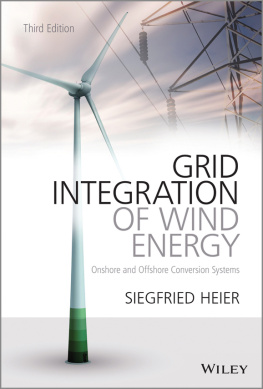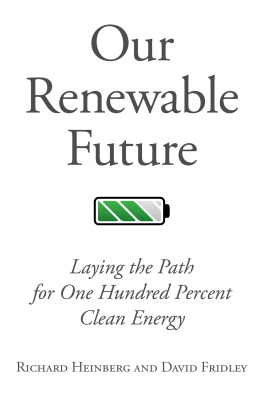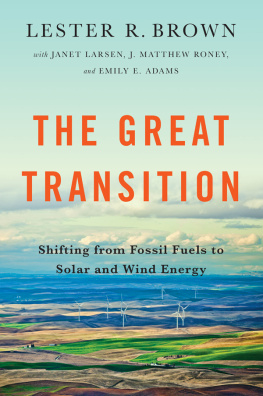Founded in 1807, John Wiley & Sons is the oldest independent publishing company in the United States. With offices in North America, Europe, Australia and Asia, Wiley is globally committed to developing and marketing print and electronic products and services for our customers' professional and personal knowledge and understanding.
The Wiley Finance series contains books written specifically for finance and investment professionals as well as sophisticated individual investors and their financial advisors. Book topics range from portfolio management to e-commerce, risk management, financial engineering, valuation and financial instrument analysis, as well as much more.
For a list of available titles, visit our Web site at www.WileyFinance.com .
Copyright2012 by Tom Fogarty and Robert Lamb. All rights reserved.
Published by John Wiley & Sons, Inc., Hoboken, New Jersey.
Published simultaneously in Canada.
No part of this publication may be reproduced, stored in a retrieval system, or transmitted in any form or by any means, electronic, mechanical, photocopying, recording, scanning, or otherwise, except as permitted under Section 107 or 108 of the 1976 United States Copyright Act, without either the prior written permission of the Publisher, or authorization through payment of the appropriate per-copy fee to the Copyright Clearance Center, Inc., 222 Rosewood Drive, Danvers, MA 01923, (978) 750-8400, fax (978) 646-8600, or on the Web at www.copyright.com . Requests to the Publisher for permission should be addressed to the Permissions Department, John Wiley & Sons, Inc., 111 River Street, Hoboken, NJ 07030, (201) 748-6011, fax (201) 748-6008, or online at http://www.wiley.com/go/permissions .
Limit of Liability/Disclaimer of Warranty: While the publisher and author have used their best efforts in preparing this book, they make no representations or warranties with respect to the accuracy or completeness of the contents of this book and specifically disclaim any implied warranties of merchantability or fitness for a particular purpose. No warranty may be created or extended by sales representatives or written sales materials. The advice and strategies contained herein may not be suitable for your situation. You should consult with a professional where appropriate. Neither the publisher nor author shall be liable for any loss of profit or any other commercial damages, including but not limited to special, incidental, consequential, or other damages.
For general information on our other products and services or for technical support, please contact our Customer Care Department within the United States at (800) 762-2974, outside the United States at (317) 572-3993 or fax (317) 572-4002.
Wiley also publishes its books in a variety of electronic formats. Some content that appears in print may not be available in electronic books. For more information about Wiley products, visit our web site at www.wiley.com .
Library of Congress Cataloging-in-Publication Data:
Fogarty, Tom, 1963
Investing in the renewable power market : how to profit from energy transformation /
Tom Fogarty and Robert Lamb.
p. cm. (Wiley finance ; 614)
ncludes bibliographical references and index.
ISBN 978-0-470-87826-2 (cloth); ISBN 978-1-118-22102-0 (ebk);
ISBN 978-1-118-23478-5 (ebk); ISBN 978-1-118-25936-8 (ebk)
1. Renewable energy resourcesUnited StatesFinance. 2. InvestmentsUnited States.
I. Lamb, Robert, 1941- II. Title.
TJ807.9.U6 F64 2012
333.79' 40681dc23
2011043312
To Yayoi and Atticus
Acknowledgments
Tom would like to thank his wife Yayoi, who encouraged him to write a book about the challenges of renewable and fossil energy project development. Tom's thinking about the energy business has been influenced by a number of people he has worked with. This includes Roy Cuny, Larry Grundmann, Richard Grosdidier, Phil Burkhardt and Seth Arnold. He was fortunate to learn about distressed and entrepreneurial investing from Art Rosenbloom, MaryJane Boland, Ed Altman, Roy Smith, and Allan Brown at NYU Stern.
Bob and Tom truly appreciate all of the efforts in creating and organizing this book from Debra Englander, Jennifer MacDonald, and Donna Martone of Wiley. Their work was always professional and they were instrumental in reviewing concepts.
T.F and R. L.
Introduction
This book was written to help investors, energy practitioners, and students understand the limits of renewable power. It is intended to help the reader learn how to evaluate renewable power investments by reviewing the technical and economic issues for fossil power as well as wind, solar, thermal, and other renewable power technologies.
Together, we bring both an academic and a practitioner perspective to this book. Tom is an energy executive at a major international energy corporation. He was a financial-management and energy consultant and a former executive MBA student of Professor Bob Lamb. Bob has published books and chapters on energy, finance, and strategic management. He has been debt adviser to New York Power Authority, the U.S. government, various states, public authorities, and corporations. Bob has also served as expert witness in litigations and arbitrations. Tom and Bob have jointly collaborated on a number of energy projects. Both of us, in our work and experience, were frustrated that there was not a text available to soberly evaluate renewable power investments in today's complex energy environment.
The global energy markets have never been so complex and fast changing. The United States has recently discovered very large amounts of shale gas embedded in solid rock formations extending from New York to Texas and California. That shale gas is extractable via new technologies. There is a concern that this plentiful and currently cheap natural gas could make the United States complacent about its energy future. The development and use of hydraulic fracturing has made shale gas an energy game changer. This new natural gas supply makes the overall economics difficult for renewable energies and for coal and nuclear power plants.
In fact, the solar company Solyndra filed for bankruptcy at the end of August 2011 despite having received a 2009 cash grant of $535 million from the U.S. Treasury. Beacon Power, a manufacturer of flywheel based energy storage systems also filed for bankruptcy on October 31, 2011. The extensive U.S. natural gas pipeline and storage infrastructure have made shale gas an immediate player in the energy marketplace. Other countries are also discovering shale gas supplies but might not have the infrastructure to distribute it to end users.
Even more important, these national, political, and social conflicts have been taking place simultaneously with the rapid pace of several major new technology changes and broad, intense global ramp-ups of various types of unconventional energy, gas, shale gas, tar sands extraction, innovations at ultra-deep horizontal wells. Oil and gas drilling innovations in semi-submersibles and arctic drilling platforms.
The major Japanese earthquake, tsunami, and the Fukushima Daiichi nuclear power plant meltdown, along with Germany's decision to close its nuclear reactors, are deeply impacting the worldwide nuclear power industry. In the United States, the Indian Point nuclear power plant operating license extension is being challenged by various New York state agencies. Their concern is that the facility is too close to New York City.
This book is meant to be a current, realistic analysis of the various changes in the development of renewable energy technologies and how these technologies compare to fossil energy production, energy storage technologies, and energy transmission and demand-side management. One of the most important points of this book is to stress the essential need for multiple types of energy plus coordination mechanisms across both nations and continents. Countries continue to take an approach of either all coal or all nuclear and, more recently, all natural gas. We will need all energy sources in the future.
Next page










